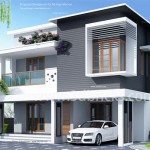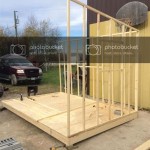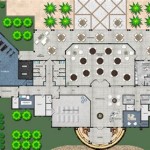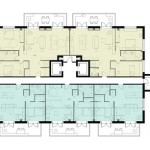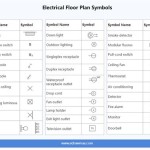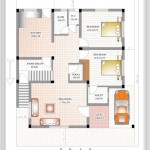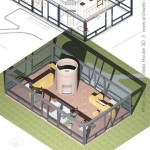1,000 Square Foot House Plans: Maximizing Space and Efficiency
Designing a home within a confined footprint, such as 1,000 square feet, requires careful consideration of space optimization, functionality, and lifestyle needs. The challenge lies in effectively utilizing every square inch to create a comfortable, livable, and aesthetically pleasing environment. 1,000 square foot house plans are becoming increasingly popular, driven by factors such as affordability, environmental concerns, and a growing desire for simpler living. These plans necessitate strategic design choices to ensure both practicality and visual appeal.
Successful 1,000 square foot house plans prioritize open-concept living spaces, efficient storage solutions, and smart use of natural light. The initial planning stages involve a detailed assessment of the homeowner's requirements, lifestyle, and aesthetic preferences. This assessment informs the layout, room placement, and selection of interior finishes. Careful consideration is given to the orientation of the house on the lot to maximize sunlight exposure and natural ventilation, contributing to energy efficiency and overall comfort.
Key Design Considerations for 1,000 Square Foot Homes
Maximizing space in a small home requires strategic design choices. Open-concept living, dining, and kitchen areas create a sense of spaciousness and allow for flexible use of the available square footage. This design approach eliminates unnecessary walls, promoting better flow of movement and improved communication between different areas of the home. Vertical space utilization is also crucial. High ceilings, loft areas, and strategically placed shelving can add visual interest and increase storage capacity without significantly impacting the floor plan.
The selection of furniture and fixtures is equally important. Multi-functional furniture, such as sofa beds, storage ottomans, and folding tables, helps to conserve space and adapt to different needs. Built-in storage solutions, like custom cabinetry and recessed shelving, provide ample storage without encroaching on living areas. Wall-mounted fixtures, such as floating shelves and wall-mounted sinks, further contribute to space efficiency and create a streamlined appearance.
Natural light is a vital element in small home design. Large windows, skylights, and strategically placed mirrors can brighten the interior, making it feel larger and more inviting. Proper window placement also contributes to energy efficiency by maximizing solar gain during the winter months and minimizing heat gain during the summer. Light-colored walls and ceilings further enhance the effect of natural light, creating a brighter and more cheerful atmosphere.
Floor Plan Layout and Room Placement
The floor plan is the foundation of any successful 1,000 square foot house design. Careful consideration must be given to the placement of each room to optimize functionality and flow. Common layout options include one-story, two-story, and split-level designs, each with its own advantages and disadvantages depending on the specific site conditions and homeowner preferences.
In general, open-concept layouts are favored for their ability to create a sense of spaciousness. The kitchen often serves as the central hub of the home, connected to the living and dining areas. This arrangement facilitates social interaction and allows for seamless transitions between different activities. The placement of bedrooms and bathrooms is typically determined by privacy and noise considerations.
One-story layouts are ideal for accessibility and ease of maintenance. They eliminate the need for stairs, making them suitable for individuals with mobility issues. However, one-story homes require a larger footprint, which may not be feasible on smaller lots. Two-story layouts, on the other hand, maximize vertical space and minimize the overall footprint. This design is well-suited for compact urban lots but may require more careful planning to ensure adequate natural light penetration on the lower level.
Split-level designs offer a compromise between one-story and two-story layouts. They typically feature staggered floor levels, creating distinct zones for different activities. This design approach can be particularly effective for separating living areas from sleeping areas, providing greater privacy and noise isolation.
The placement of entryways and hallways is also crucial. Well-defined entryways provide a welcoming transition between the exterior and interior spaces. Hallways should be kept to a minimum to avoid wasting valuable square footage. Strategic placement of doorways and archways can improve the flow of movement and create visual interest.
Material Selection and Finishes
The selection of materials and finishes plays a significant role in the overall aesthetic and functionality of a 1,000 square foot home. Light colors, such as white, off-white, and pastel shades, are generally preferred for walls and ceilings to create a brighter and more spacious feel. Neutral flooring options, such as light-colored hardwood, tile, or laminate, further contribute to the sense of openness.
The use of natural materials, such as wood, stone, and bamboo, can add warmth and texture to the interior. Incorporating natural elements helps to create a connection with the outdoors, making the home feel more inviting and relaxing. Sustainable and eco-friendly materials, such as bamboo flooring, recycled glass countertops, and low-VOC paints, are increasingly popular choices for environmentally conscious homeowners.
Efficient lighting is essential for creating a comfortable and functional living environment. LED lighting is a cost-effective and energy-efficient option that provides ample illumination while minimizing energy consumption. Layered lighting, which combines ambient, task, and accent lighting, can create a more dynamic and visually appealing space. Dimmers allow for adjusting the brightness of the lights to suit different activities and moods.
Hardware and fixtures should be carefully selected to complement the overall design aesthetic and enhance functionality. Sleek and minimalist hardware can contribute to a modern and streamlined appearance. Quality plumbing fixtures and appliances can improve efficiency and reduce water and energy consumption. Smart home technology, such as smart thermostats and lighting controls, can further enhance convenience and energy savings.
Attention to detail is crucial in small home design. Well-placed mirrors can create the illusion of more space and reflect natural light, making the interior feel brighter and more open. Decorative elements, such as plants, artwork, and throw pillows, can add personality and warmth to the space. Clutter should be minimized to maintain a sense of order and tranquility.
In conclusion, designing a 1,000 square foot house requires careful planning, strategic design choices, and attention to detail. By prioritizing open-concept living, efficient storage solutions, and smart use of natural light, it is possible to create a comfortable, functional, and aesthetically pleasing home within a compact footprint.

Our Top 1 000 Sq Ft House Plans Houseplans Blog Com

Our Top 1 000 Sq Ft House Plans Houseplans Blog Com

10 Best 1000 Sq Ft House Plans As Per Vastu Shastra Styles At Life

1000 Sq Ft House Features Floor Plans Building And Costs Emmobiliare

1000 Sq Ft 3 Bedroom Double Floor Plan And Ground Single Y House Plans Three Two

House Plans Under 1000 Square Feet

10 Modern Under 1000 Square Feet House Plans Craft Mart

7 Ideal Small Houses Floor Plans Under 1000 Square Feet House Cottage

1000 Square Feet House Plan Design In

2bhk Floor Plan 1000 Sqft House South Facing And Designs Books

